More Evolution with Less Revolutions
Text and Photos BY John Gilbert
As time rapidly moves farther and farther away from the 20th century mark, more and more customized classic truck owners have discovered an increasing desire to restore their truck’s mid-century appeal with a hopped up early V-8 engine. When it comes to an early Effie there’s nothing quite like Ford’s first series of OHV V-8, the venerable Y-block to satisfy the craving.
Unfortunately though, if a person wants to enjoy the convenience of an automatic transmission behind their souped- up Y-block mill, the weak link in the equation is the original equipment Ford-O-Matic transmission. Although not quite as notorious as Chevrolet’s cast iron two speed Powerglide the heavyweight cast iron Ford-O-Matic is wrought with drawbacks typical of a first generation automatic transmission. At the top of the list is inefficiency, or as it is referred to in technical terms: parasitic loss. Much like it sounds, the expression refers to how much horsepower is sucked up, or robbed, from the rear wheels due to the energy required to pump the transmission and overcome inherent friction.
Next in line on the list of good reasons to upgrade from the Ford-O-Matic to a Ford AOD are the benefits reaped from three decades of evolution. Introduced in 1980, the AOD isn’t prone to slow up shifts when the transmission is cold like the Ford-O-Matic is famous for. For those of you unfamiliar with the malady, imagine what your concerns might be if you felt your engine was going to grenade at redline before the transmission shifted into the next rang, and the R’s dropped. Speaking of R’s brings us to the greatest reason there is to upgrade to a modern automatic transmission, and that’s the "OD" in AOD, Overdrive. With a 0.67:1 overdrive ratio, the AOD will effectively raise the 3.73:1 gear ratio most common in ’53-’56 F-100s to 2.49:1, which in anyone’s book is a tall set of rear-end gears.
Now that we covered the Ford AOD in generic terms, let’s move on to stating that not all beefed, or rebuilt automatic transmissions are created equal. That said, the AOD and the Y-block adapter we are using behind our ’57 T-Bird engine is from Gear Star Performance Transmissions of Akron, Ohio.
 |
Our ’57 T-Bird Y-block motor is a C-code 292 with a stick shift transmission. Stick or Ford-O-Matic the bellhousing has to be removed |
|
Before unbolting the bellhousing, we removed the starter motor… |
 |
 |
…And discovered the Bendix starter drive was ready to grenade. |
|
A CP pneumatic impact wrench made short work of over-tightened stubborn bolts. |
 |
 |
The pressure plate and clutch were removed. |
|
Typically on older engines some of the special factory hardware has been lost through the years. Notice the factory bolts are shouldered, while the bolt held by hand is non-shouldered. |
 |
 |
Anytime one is disassembling an engine and transmission it’s a good idea to check for any trouble spots. |
|
A closer look at the purple hot spots on the flywheel indicates the clutch was slipping. The next step is to remove the flywheel and investigate the problem. |
 |
 |
Bingo! The source of the oil leak is coming from these two pipe plugs with threads that were incorrectly sealed. |
|
On a stick to automatic conversion the pilot-bearing is removed and discarded. The snout on the AOD’s thrust-plate (starter ring) will take its place. We improvised our removal tool by inserting a Morgan Nokker with a hex bolt into the bearing, and side-loading it to get a grip. |
 |
 |
The Morgan Nokker worked like a champ-and hey look, it comes from the same town as our cover truck. |
|
The Y-block’s breather tube (this is the best type of breather to use on a Y-block) interfered with the Gear Star Y-block adapter plate so it was removed. It will be refitted after the job is complete. |
 |
 |
Next, it was necessary to ensure the new starter motor that is included with the Gear Star Y-block adapter had proper clearance before it was permanently installed. |
|
The area Gear Star showed in a template was ground out before we moved any further. |
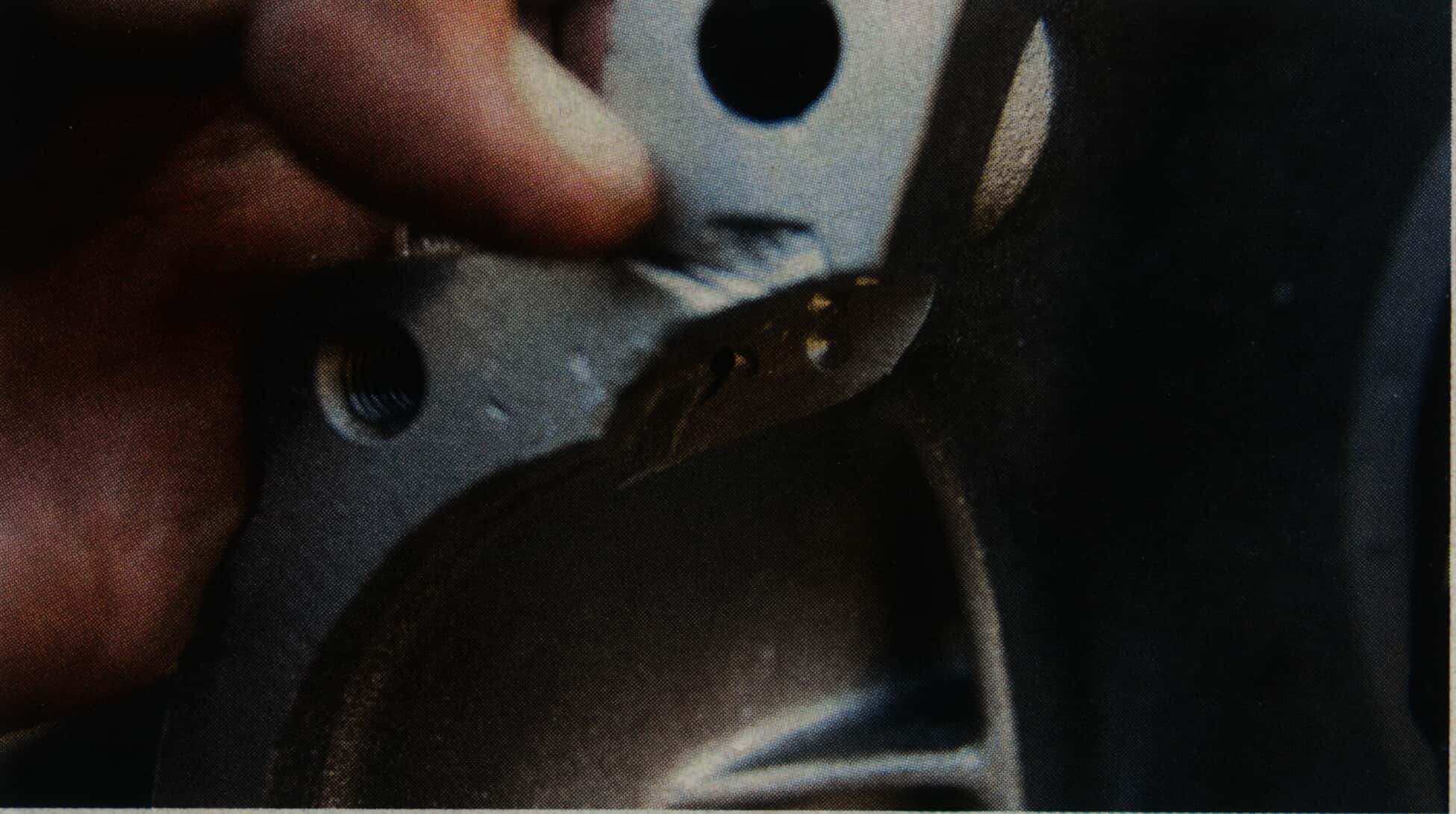 |
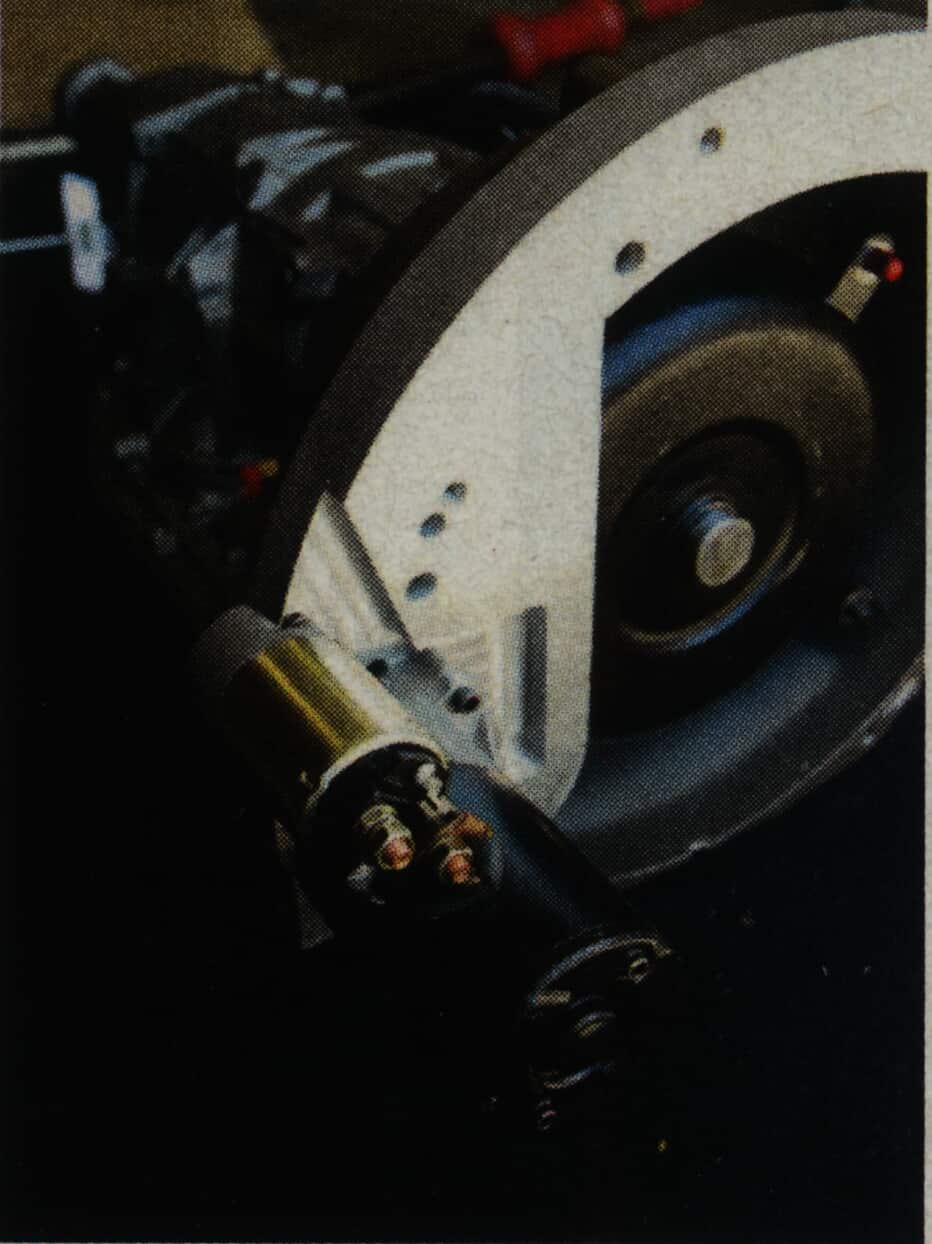 |
We bolted the Gear Star Y-block adapter and engaged the starter with a 12-volt source to ensure we had proper clearance. |
|
The overdrive on the AOD is non-electric; It’s absolutely imperative that the TV cable is a high quality product and is adjusted properly. We used a Lokar TV cable, and we will focus on the adjustment in an upcoming issue. |
 |
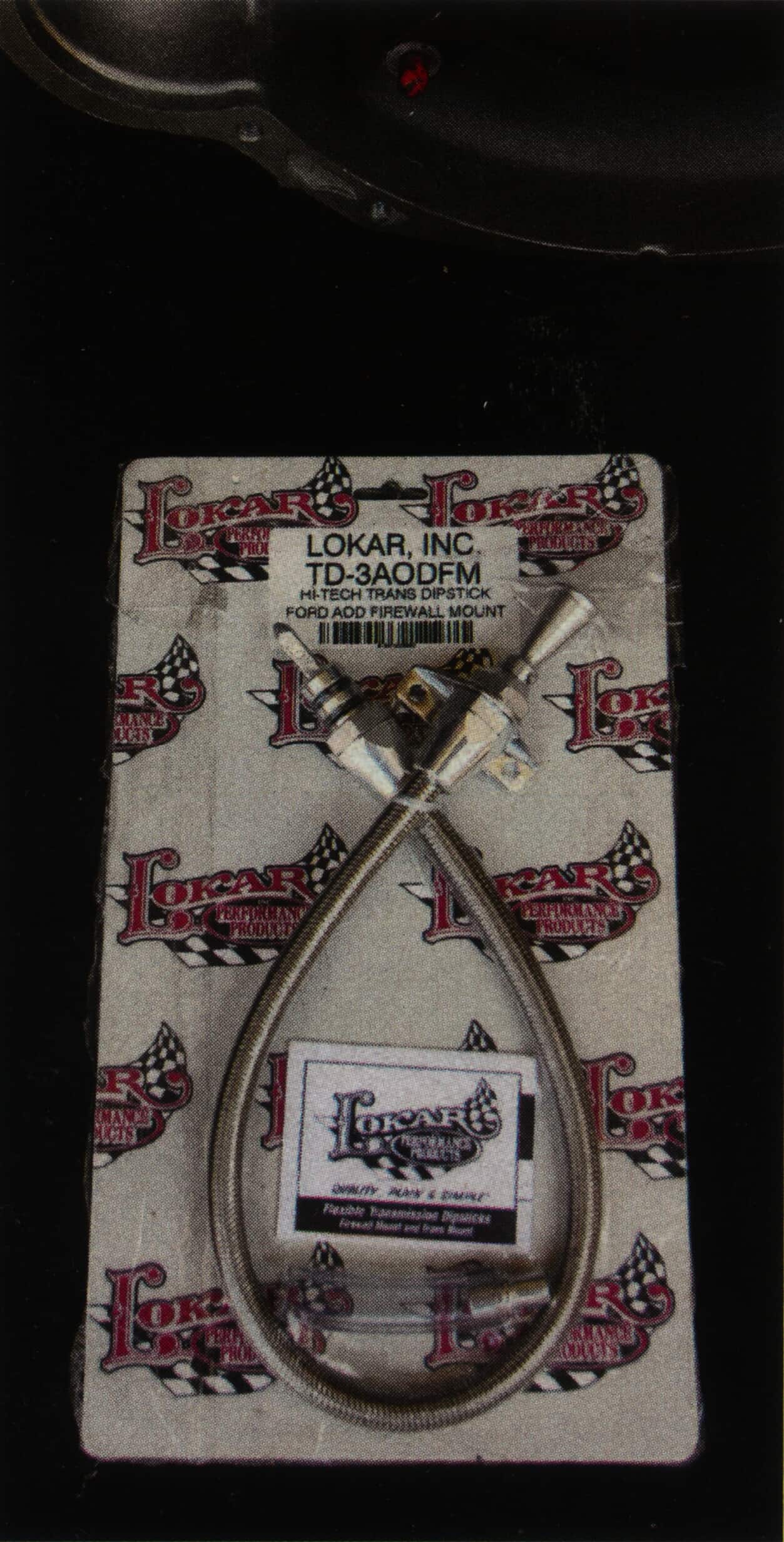 |
Ditto for the transmission dipstick: Lokar. |
|
Special attention was paid to ensure the Gear Star adapter fit over the locating dowels on the Y-block. We used a file to dress off high spots. |
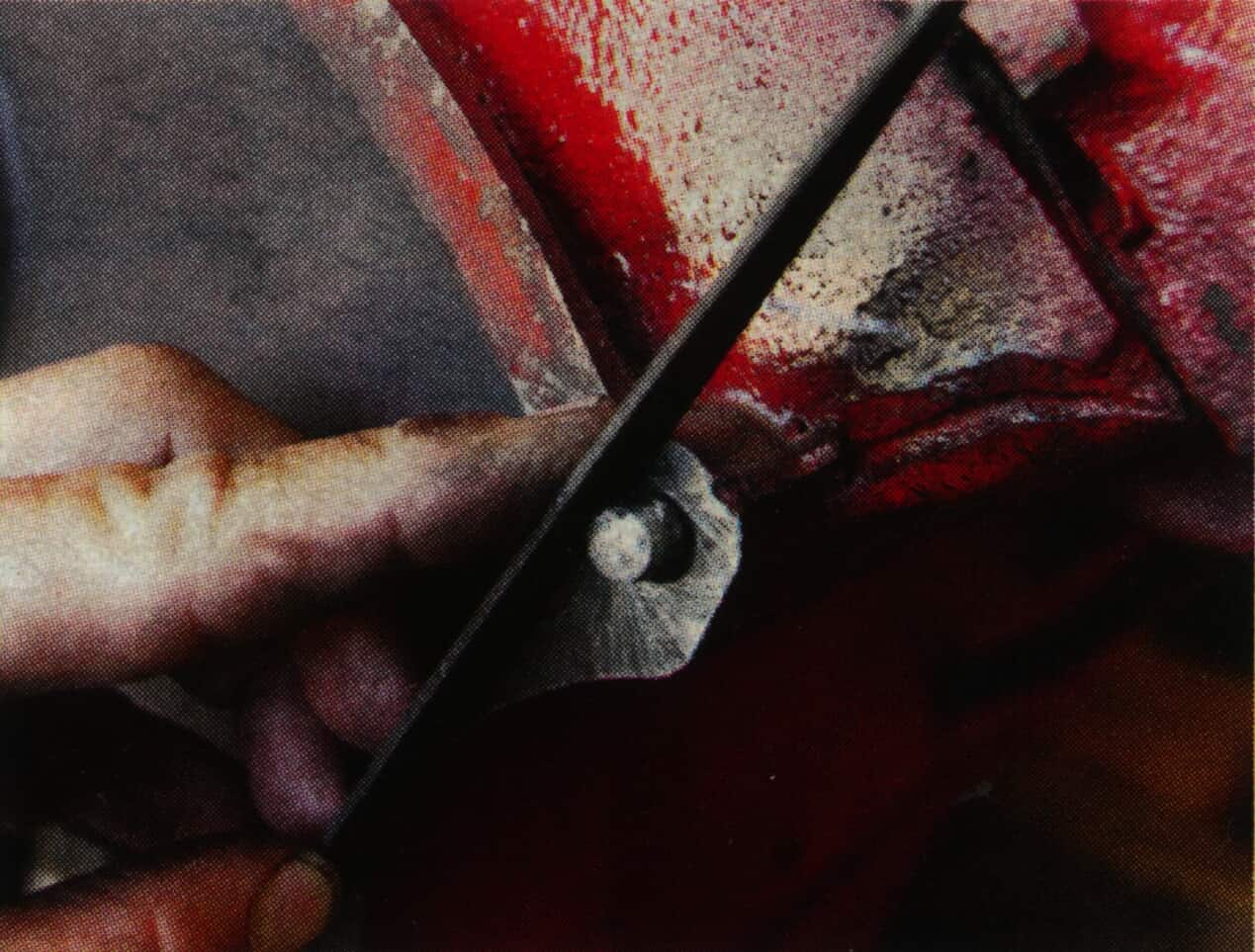 |
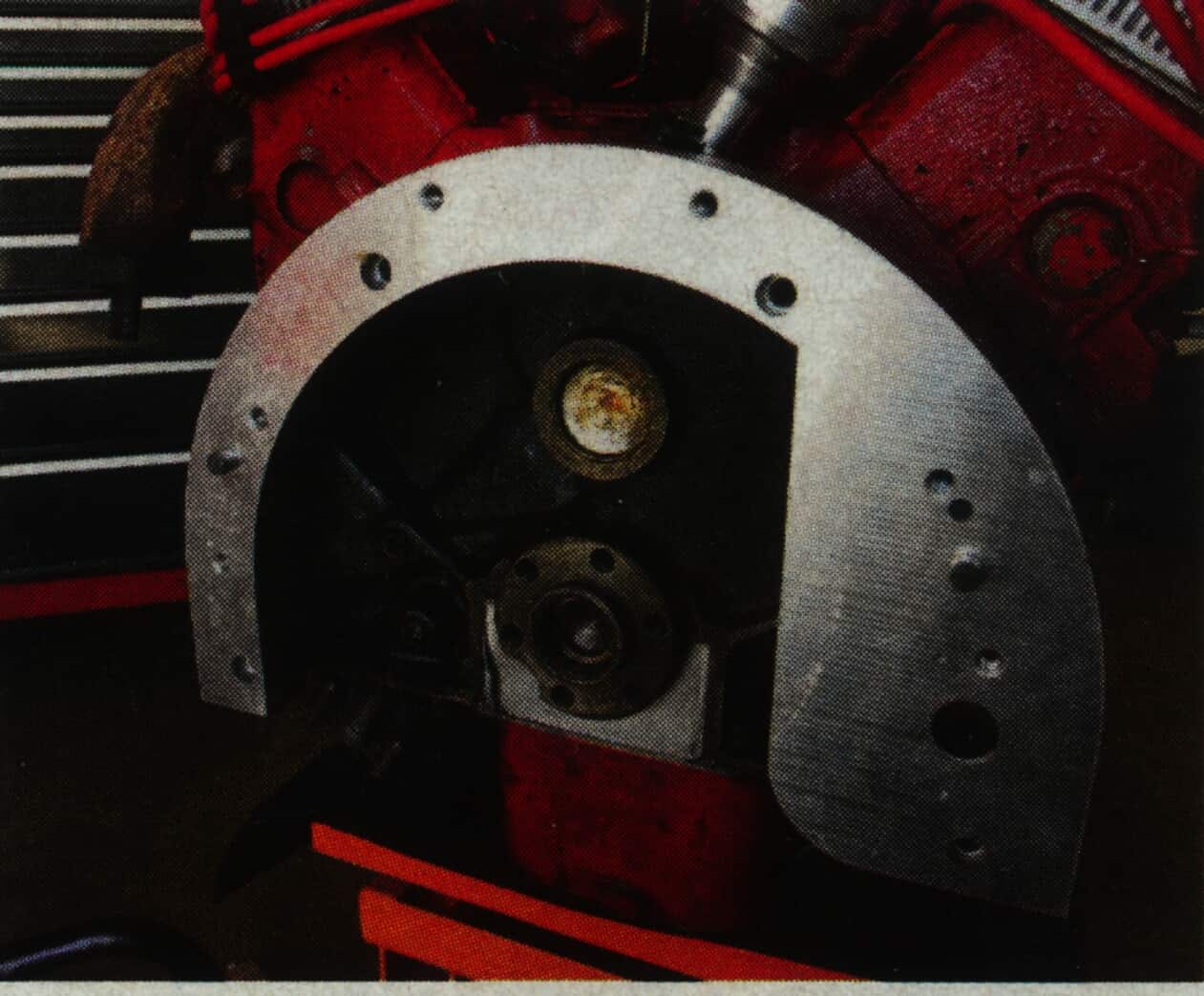 |
Fitting the Gear Star adapter required several test fittings, and more metal filed off before it was ready to go. |
|
Next, the hub for the Gear Star adapter had to be fitted to the Y-block’s crankshaft tail. |
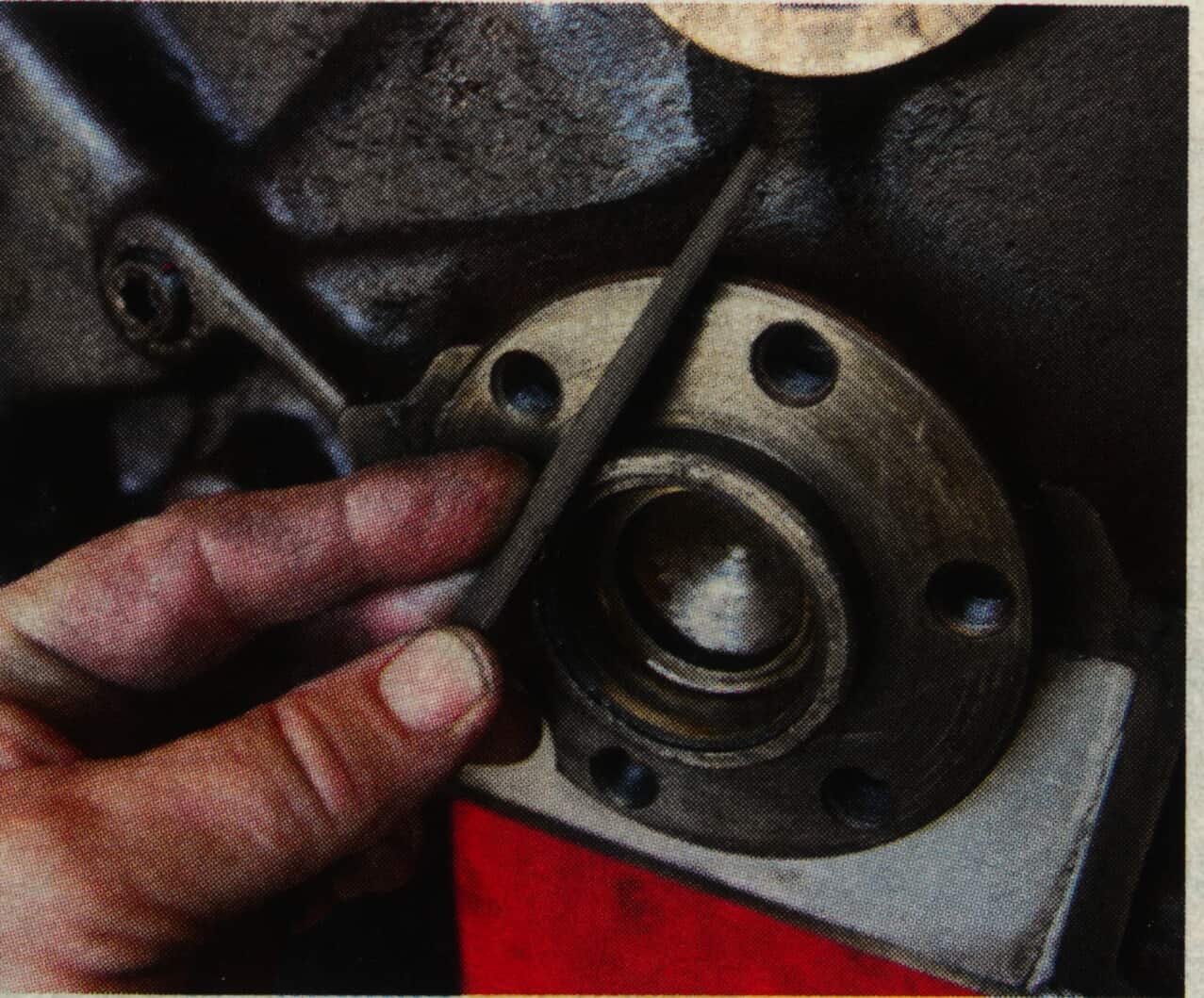 |
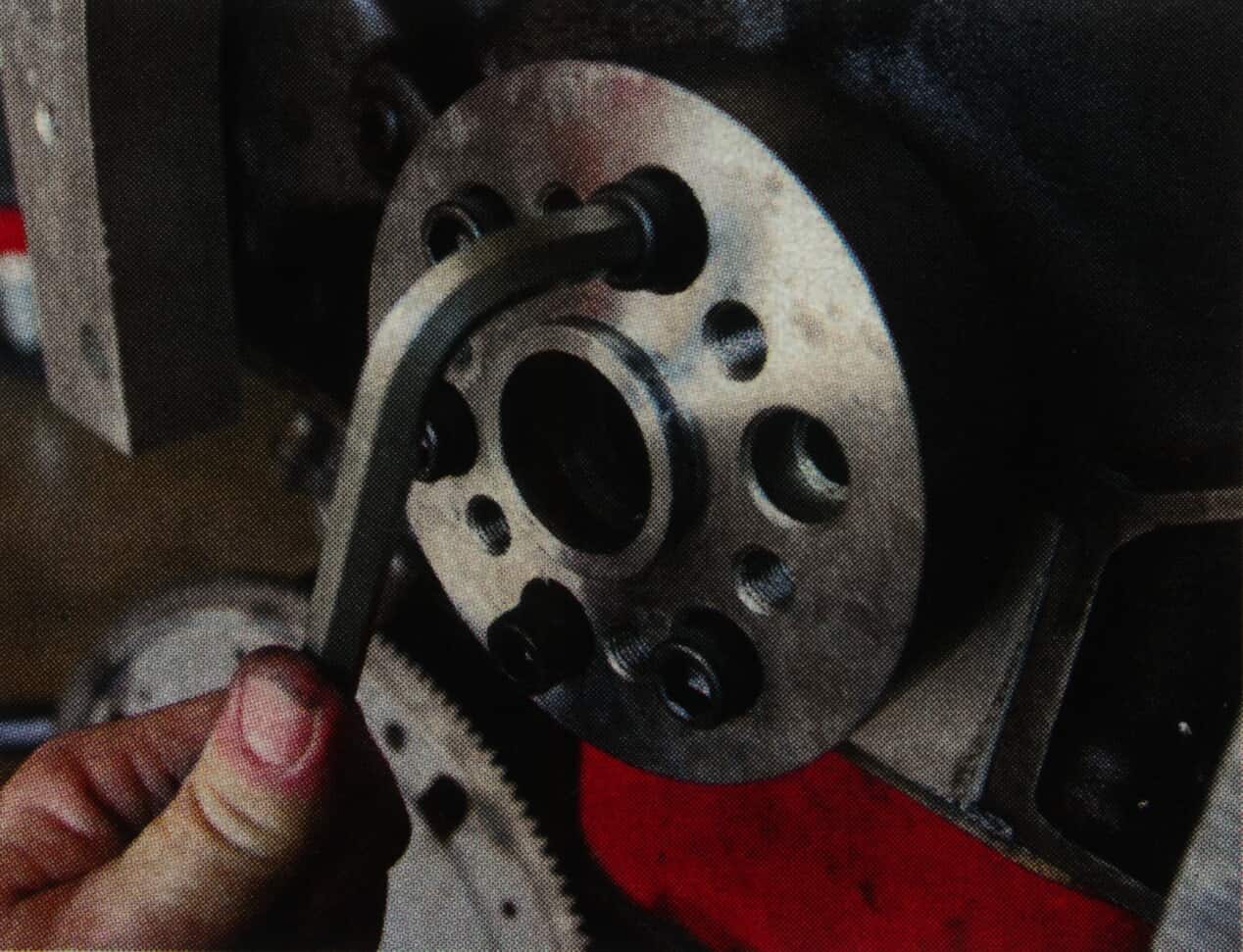 |
Once we had the hub fitting snuggly, we applied Locite to the Allen-head bolts and tightened them down to the same torque value required for a stock Y-block flywheel. |
|
Then the thrust plate was installed using Locite, and the bolts were torqued down. |
 |
 |
In this picture, the Y-block adapter is completely installed, ready to accept the four bolts on the Yank torque converter, and have the AOD mated to the Y-block engine. |
The AOD, or automatic overdrive, is Ford’s four-speed automatic transmission with overdrive. It was introduced in 1980 and was the first automatic overdrive trans from Ford. The design was largely based on transmissions from the 1950s, 60s and 70s and was intended to replace these older models, in particular, the C4, C5 and the FMX. In 1992, the AOD underwent a big change: the use of electronic controls. That’s when it became AODE, with the “E” standing for “E”lectronically.
Why the AOD Still Shines
Because the AOD is an older transmission, you might question why someone would want this in their vehicle. There are a couple of good reasons. First, transmissions continue to be improved and upgraded to meet the latest technology and capabilities. However, classic car drivers and customized truck owners don’t want to put the edgiest transmission into their vehicles. They take great pride in the mid-century appearance and style and want a transmission to go with it.
The benefit to an AOD trans is that it has a classic appeal but with modern-day technology – nothing too fancy but just enough to make the switch worth it. The Ford AOD has been perfected over three decades and isn’t likely to slow up shifts when the transmission is cold like other transmissions can. Plus, the AOD has a great overdrive ratio. Today, the AOD has evolved into the AODE and now the 4R70W, but older vehicles still benefit from the earlier version.
Features of the AOD Transmission
Let’s look at a few more benefits to going with the dependable and rugged AOD transmission from Ford.
- Extreme durability
- Easy retrofitting
- Aluminum valve body
- Thin pump gear
- Better fuel economy
- Less wear on the engine
- Quieter highway driving
- 30 pounds lighter than the TH400
- Both planetary gears live within a single carrier
- Great option for street-driven vintage Mustangs
Do you have a classic Ford that needs to have its engine replaced? Gearstar custom builds transmissions to your exact specifications using premium parts. We have some of the top technicians, and only one person will build your trans from start to finish. To learn more about building a high performance AOD transmission for your classic Mustang, call Gearstar.
Ready to experience top-notch transmission solutions and expert support?

